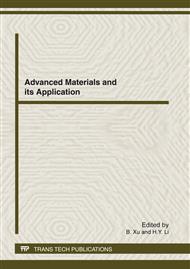p.300
p.304
p.308
p.313
p.317
p.321
p.325
p.330
p.334
Recovery of Cobalt from Cobalt Chloride Solution under the Action of Ozone
Abstract:
A process utilizing ozone as the precipitant for the oxidation-precipitation of cobalt from cobalt chloride solution has been studied. The main factors affecting the oxidation rate such as the stirring speed, solution temperature, ozone partial pressure, initial concentration and flow rate were investigated comprehensively. The results demonstrated that the precipitate was CoOOH and the precipitation reaction is diffusion-controlled. The oxidation rate was independent of the initial concentration or solution temperature. The oxidation rate increases obviously with increasing the stirring speed. The Linear Relationship Between ozone partial pressure or flow rate and oxidation rate was found in this paper.
Info:
Periodical:
Pages:
317-320
Citation:
Online since:
February 2012
Authors:
Keywords:
Price:
Сopyright:
© 2012 Trans Tech Publications Ltd. All Rights Reserved
Share:
Citation:


